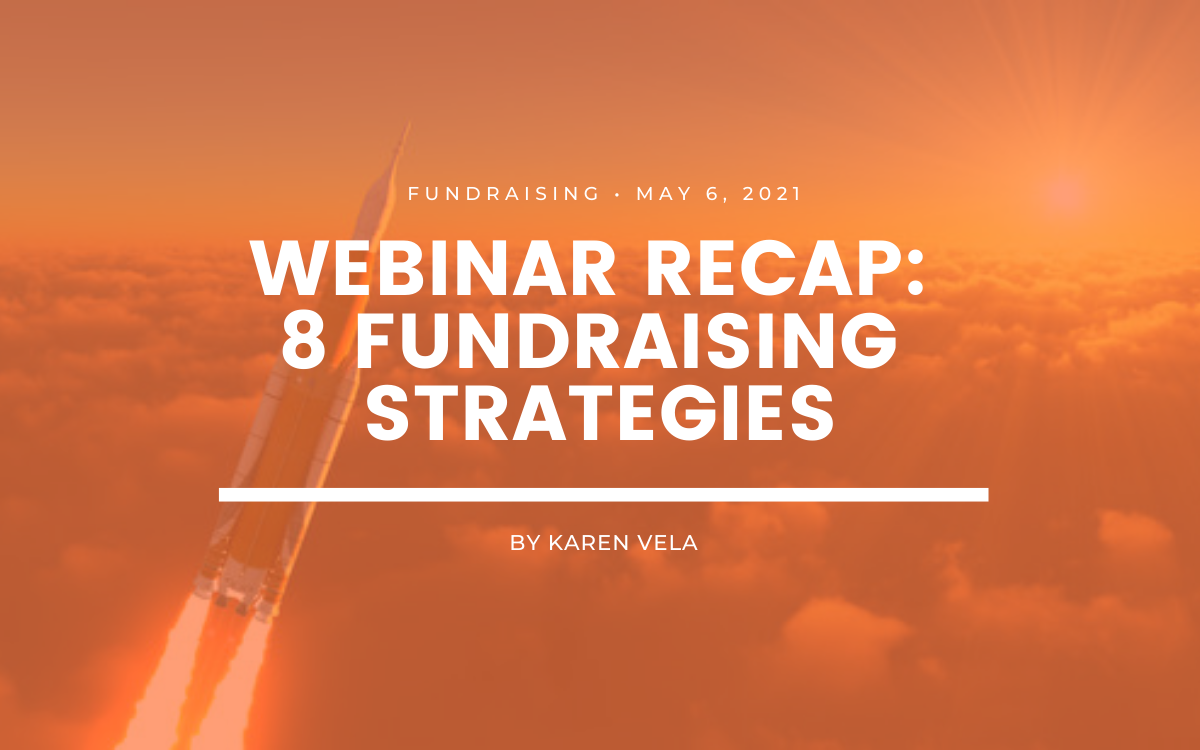Webinar Recap: 8 Fundraising Strategies to Help You Raise More in 2021
4 min to read ✭ In this post, you'll learn about the effective fundraising strategies we discussed in our recent webinar.
Fundraising is a huge part of a nonprofit’s operations, and the key to successful campaigns is strong marketing. Whether it’s digital fundraising or in-person, our webinar 8 Fundraising Strategies to Help You Raise More in 2021 covered it all. We went live with expert fundraiser Candace Cody, from CauseVox to spill the tea. This is only a brief recap, so be sure to snag the recording to access the value-packed recording.
Key Takeaways: 8 Fundraising Strategies
It’s important to understand just how powerful virtual fundraising can be and know that it is certainly here to stay. The switch to virtual events and fundraising efforts was eventually going to occur, but the transition was accelerated by the pandemic in 2020. At first, virtual efforts were simply to stay afloat, but after so many nonprofits realized how successful they were, many of them have planned to keep part of their fundraising efforts virtual forever.
1. Peer-to-Peer
Peer-to-peer fundraising activates members of your community to do the fundraising leg work for you. They network with family and friends to help reach their individual fundraising goals. This strategy typically raises 2x as much as crowdfunding because of the ability to reach new and wider audiences via your participants. P2P is a big contributor to new donor acquisition as well.
2. Recurring Giving
Recurring giving is when a donor chooses to make a regular ongoing donation rather than a one-time gift and it can make a HUGE impact on your organization. Don’t believe us? Recurring giving results in a 487% increase in total donor lifetime value, a 50% increase in average donor retention rate, and 52% of millennials are more likely to give monthly over a large one-time donation. Create a campaign that “SERVES” and utilize different marketing channels to spread the word.
3. Webinars
Webinars are a great way to increase engagement. In fact, we used this webinar to engage with our audience, and it sure was a success! Webinars help to build stronger relationships to alleviate the lack of in-person events on your calendar. Host an educational webinar, a virtual event, or a programmatic webinar to showcase your impact, tell your story, and even drive online donations.
4. eCommerce
Major for-profit brands participate in eCommerce, so why can’t nonprofits? Start an online storefront using tools like Shopify and Printful to simplify your supply chain and shipping. Nonprofits can sell merchandise like clothing, hats, stickers, mugs, etc., and dedicate the proceeds to your cause. Selling merchandise to supporters is a great way to make them feel like they’re getting something in return for their donation, and repping your brand can make them feel a part of the community.
5. Corporate Partner Fundraising
Many for-profit companies are open to supporting nonprofits and their missions by encouraging their employees to participate in fundraising efforts. Try engaging a corporation to commit to a match, become a sponsor, participate in P2P, or crowdfund for you. This is a great way to acquire new donors and build community if the company is local and they can attend your events.
6. Facebook Ads
We can’t get enough of Facebook Ads over here because they are so incredibly successful. Utilize Facebook ads to fundraise because they have phenomenal targeting abilities and reach. Hosting a webinar, in-person event, P2P fundraiser, or recurring giving campaign? Great! Run Facebook ads to spread the word! Be sure to follow our best practices to maximize results.
7. Hybrid Fundraising
Hybrid fundraising means creating an event that is both virtual and in-person. The cost of doing so is low and the return on investment is high because of the ability to reach wider audiences online paired with your local supporters. Find ways to create a virtual component that is exclusive or different than what the people in person are experiencing to create an incentive for those who choose the virtual route.
8. Virtually Connecting Donors with Beneficiaries
Imagine you donated $500 to a cause that helps build homes for families in impoverished countries. How incredible would it be to meet the family that your gift benefitted? That’s the power of virtual communication. Think creatively about ways you can truly demonstrate the impact of gifts to your donors. Remember to appeal to those emotions!





